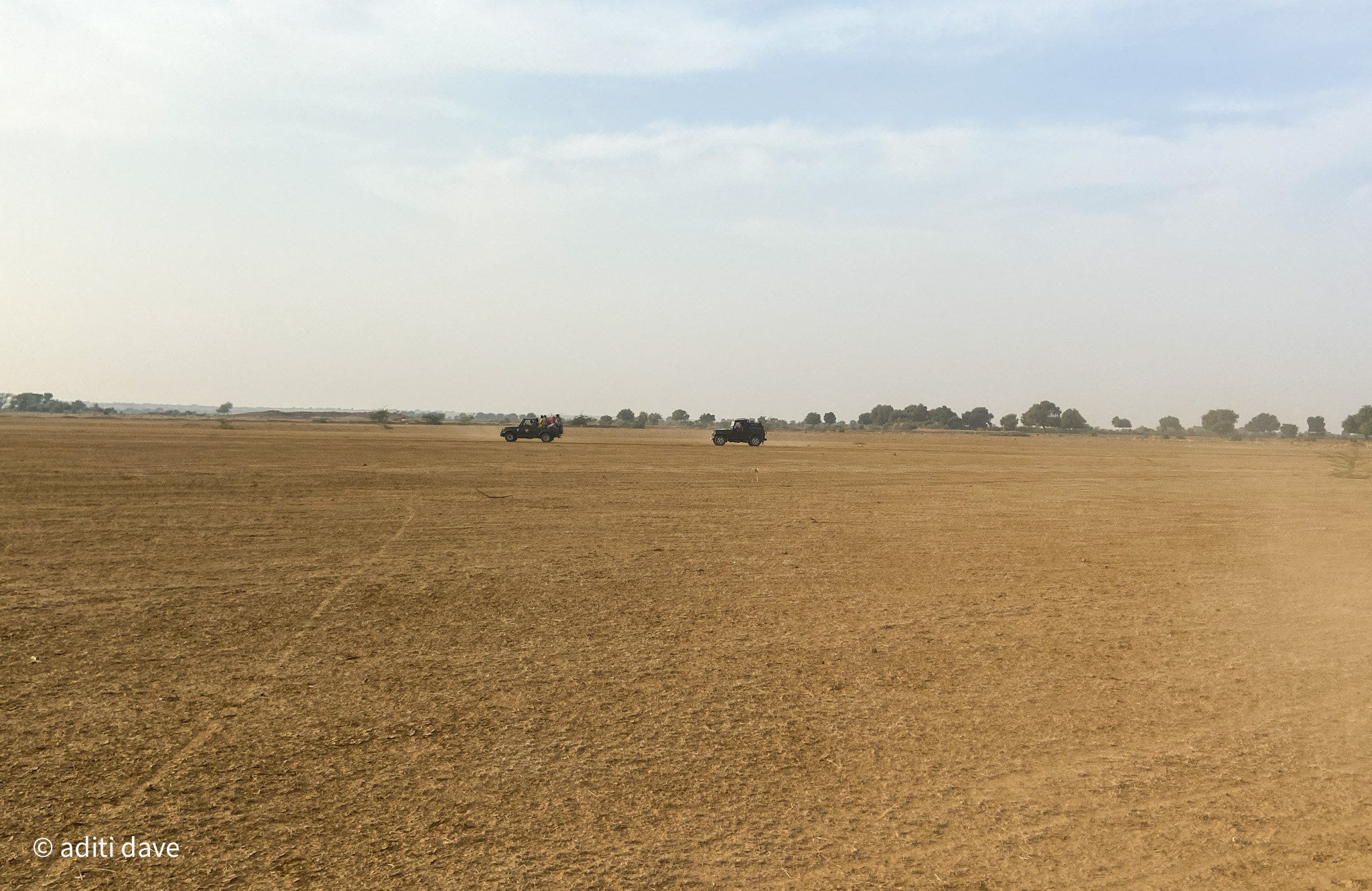
Feathers in the Desert: Exploring Biodiversity in the Backyard of the Golden City Jaisalmer
Imagine the thrill of spotting a tiger in the wild, and then amplify that excitement with the elusiveness of a very “endangered” bird. It certainly felt like we were on an impossible treasure hunt, when our first safari round unfolded through the vast barren desert land! And although the cold and arid winds teased us with glimpses of vultures, wheatears, buzzards, and even a shy desert mouse, the star of our quest played master of hide-and-seek.
As the sun dipped below the horizon, we reluctantly retreated to our fancy tent resort stay. It is one of the many that have sprouted across the desert landscape, catering to the rising tide of tourists. Unfortunately for the seekers of serenity, these tent resorts also bring with it a symphony of noisy celebrations. Despite our chagrin, we retired early, eager to rise with the dawn for our avian quest.
With the rising sun, our mission began, hopes riding high. Lo and behold, luck favored the persistent. Although a distant silhouette teased our eager eyes, and our telephoto lenses struggled to capture its gracious beauty, our hearts soared. Welcome to my Thar Desert adventure, where every gust of wind whispered tales of the magnificent Great Indian Bustard (GIB), locally known as Godavan.
Jaisalmer’s Natural Gem: The Formidable Desert National Park
Jaisalmer, renowned for its yellow stone structures, majestic fort, golden sand dunes, and rich culture, isn’t just a royal treasure but also a hotspot on India’s tourist map. Amidst this picturesque setting, my mission was not to uncover royal treasures but to delve into the golden biodiversity hidden within the folds of the Thar Desert.
Accompanied by seasoned bird enthusiasts for an Ornithology course by BNHS, our destination was the formidable Desert National Park (DNP) of Jaisalmer, the second-largest national park in India, located 40 kms from Jaisalmer.
 DNP, covering over 3000 sq km of dry desert, is not just a land of stillness; it’s a canvas painted with the hues of nature’s resilience. Despite its harsh appearance, the park is a thriving hub of biodiversity, a sanctuary for numerous bird and animal species.
DNP, covering over 3000 sq km of dry desert, is not just a land of stillness; it’s a canvas painted with the hues of nature’s resilience. Despite its harsh appearance, the park is a thriving hub of biodiversity, a sanctuary for numerous bird and animal species.
Amidst this fragile ecosystem, ancient fossils scattered across the park stood as silent witnesses to a time long gone. The real stars of the show here are the birds—migratory and resident—winging their way through the desert sky. In this avian paradise, the Great Indian Bustard (GIB) takes center stage, a bird I had longed to sight since my research for a documentary film project. Though the film didn’t materialise, spotting the GIB became a goal etched in my bucket list.
Great Indian Bustard: A Majestic Yet Endangered Resident of the Desert
The Great Indian Bustard (GIB), a critically endangered bird predominantly found in Rajasthan and Gujarat in India, bears the unfortunate label of being critically endangered by the International Union for Conservation of Nature—placing it at a higher risk of extinction than even the tiger. Preferring grasslands as its habitat, this sizeable bird spends the majority of its time on the ground, sustaining itself with insects, lizards, and grass seeds.
Rajasthan hosts the largest concentration of GIBs, approximately 120 birds, but sadly, its population has been rapidly declining, primarily attributed to habitat loss, stray dogs and unchecked development projects. While commendable conservation efforts are underway, led by organisations like BNHS, government initiatives and local conservationists, the challenges persist, demanding more comprehensive action.
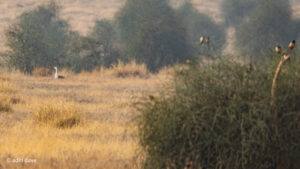
Understanding Desert Birdlife with Khan & Co.
Now, let’s immerse in the enchanting moment when my dream of witnessing the GIB in its natural habitat became a reality. On our second safari round in the Desert National Park (DNP), the expertise and unwavering determination of our guides, led by Musa Khan, brought the elusive Bustard into view.
Amidst the golden sands and the vast expanse of the desert, we were not only fortunate to spot the elusive Bustard but also marveled at a mesmerizing array of over 40 unique bird species, including migratory and resident varieties. The safari also treated us to sightings of a desert fox, chinkaras (Indian Gazelle), and Nilgai.
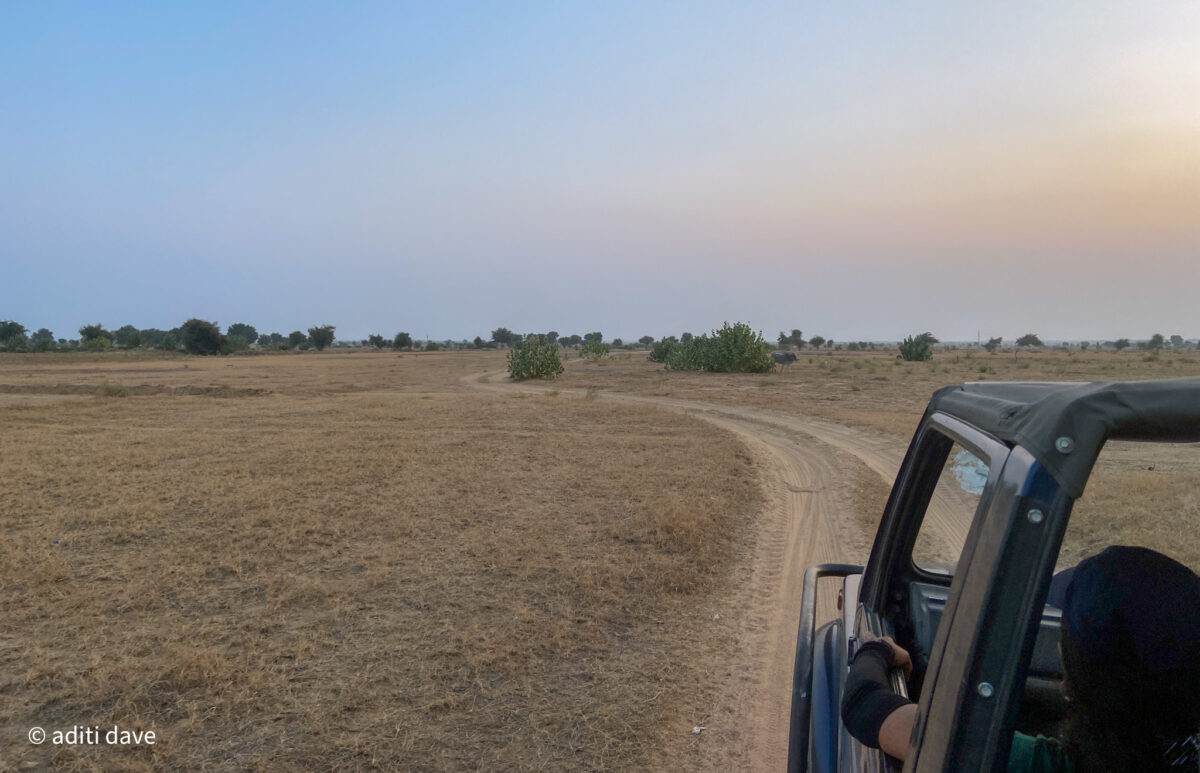
Our DNP safaris were further enriched by the wealth of knowledge possessed by Musa Khan and his team regarding the basic ecology, behaviour, migration, movement, and plumage differences of various bird species. A special shout out goes to Musa Khan, a recognised guide affiliated with the forest department, BNHS, and other organisations. He serves as the go-to expert for desert wildlife, and along with his team of bird guides, plays a crucial role as dedicated conservationists for the GIBs, working tirelessly to monitor and protect this endangered species.
Khichan Chronicles: Conservation Tales of Demoiselle Cranes
As we immersed ourselves in the splendor of avian life at the DNP (Destination Nature Paradise), we had no inkling of the extraordinary journey that awaited us in Khichan, a quaint village nestled about 170 kms from Jaisalmer. Unfolding as an unexpected wildlife spectacle, Khichan became a haven to sight the elegant Demoiselle Cranes, named by Queen Marie Antoinette of France for their graceful appearance or Kurjas, as they are locally called.
On a day tinged with the possibility of rain, the rusty landscape of Khichan revealed a breathtaking sight—a vast congregation of Demoiselle cranes gracefully relishing their feed in an open ground. Overwhelmed with excitement, I impulsively moved closer until a local resident gently reminded me of the importance of maintaining a respectful distance to avoid disturbing these grey beauties.
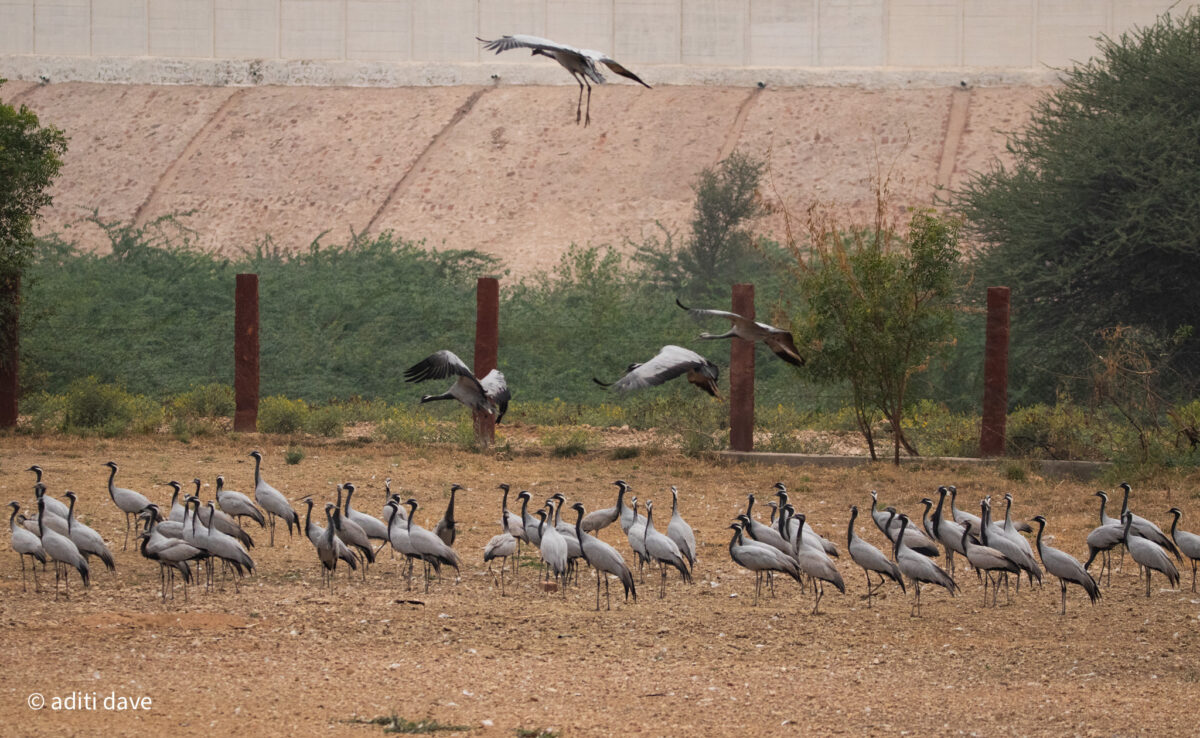
Our vantage point was a rooftop of a nearby house, offering an unobstructed view of these delicate grey and black-plumaged compatriots. Engrossed in capturing these beautiful birds with our cameras clicking away, we were joined by a seemingly simple man with an extraordinary story of conservation.
Sevaram’s Crusade: Beyond the Ordinary
Sevaram Parihar, a resident of Khichan and owner of the vantage point house, emerges as a true hero in the conservation narrative of Demoiselle cranes in Rajasthan. He shared tales about the annual migration phenomenon of the winged guests to the sleepy town spanning vast distances from Mongolia, Russia, and North China. The cranes have been treating Khichan as their winter staycation from August to March since 1970s.
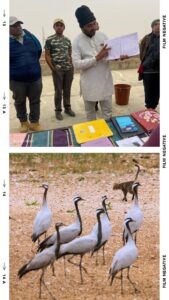
The people of Khichan, predominantly from the Jain Hindu Community, staying true to their religious ethics of empathy and love for all living beings, have been the kind and caring hosts for these Demoiselle cranes. They’ve been feeding them tonnes of grains daily, preserving the perching grounds and have even established a local vet center for injured birds.
Sevaram, in particular, has gone above and beyond, single-handedly championing the conservation and protection of the Demoiselle Cranes. His efforts include challenging electrical companies to remove pylons, legal battles with local civic bodies, tending to injured cranes and more. For his bravery and unwavering dedication, Sevaram has received numerous awards, earning him the title of a true green warrior.
The Essence of Conservation is Empathy
The story of Khichan serves as a poignant reminder that conservation transcends financial status, educational qualifications, or political power—it’s a testament to the will and empathy we hold for our fellow species on Earth. Our time in Khichan, with Demoiselle Cranes gracefully soaring above us, became a spectacle etched in our memories.
We were also enriched with knowledge about efforts by BNHS to conserve the GIB and the rich avian life of the Desert state through the conservationists working there. Overall the trip with BNHS proved to be an enlightening lesson, surpassing the insights gleaned from online research or textbooks in our Ornithology course.
https://missfittotravel.co.in/index.php/2024/01/07/wildlife-wonders-a-pictorial-odyssey-through-jaisalmers-desert-national-park-khichan-sanctuary/
Beyond Birding: Cultural Delights and Historical Treasures in Jaisalmer
While the primary purpose of my visit to Jaisalmer was centered around birding, the Golden City had more to feathers in its cap to offer. In the precious few hours left before my train journey back home, I delved into the region’s cultural and historical treasures alongside fellow birding enthusiasts.
Dressing Like Locals, Goat Chats, and Cross-Border Chuckles
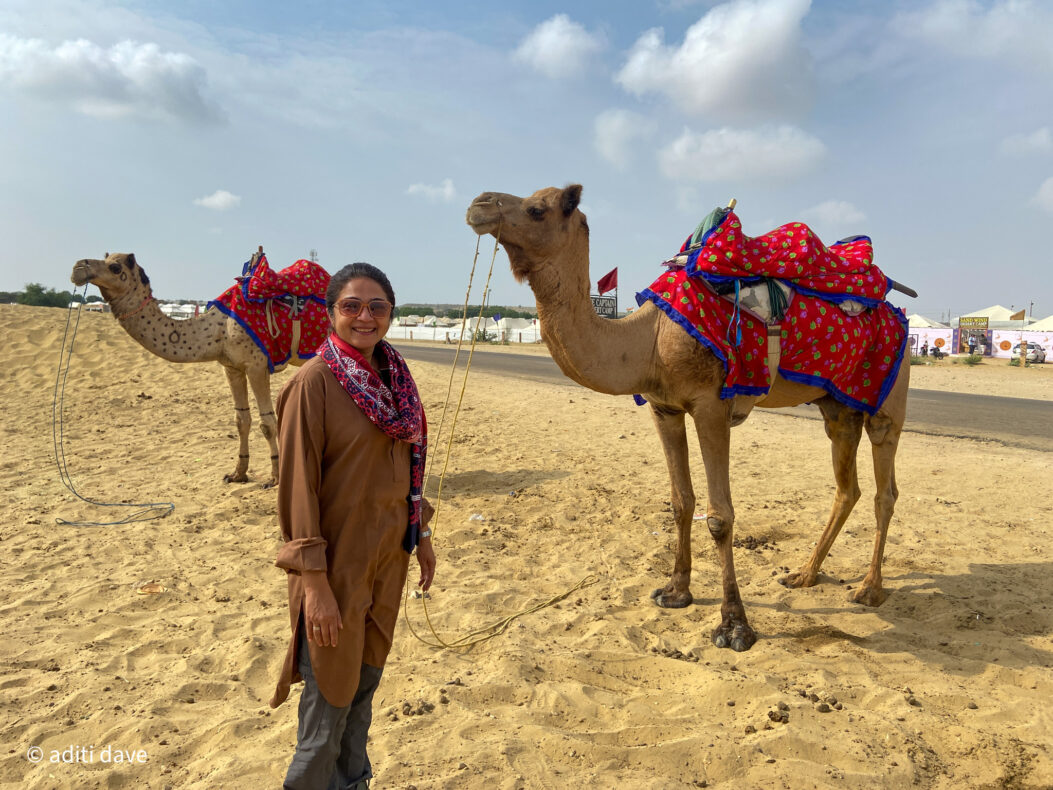
Beginning with a stroll through the local markets, I grabbed some Sindhi swag much to the amusement of my hosts—Musa Khan and his team. Decked in the local attire accompanied by a Ajrakh stole, I embarked on a light hearted adventure to check out the camels at the Sam sand dunes, eliciting some comedic banter from my hosts.
The Ajrakh stole, supposedly was an export from the Sindh region of Pakistan, bringing ponderings of cross-border cultural affinity. Tales of trespassing shepherds and my attire suggested I was eligible for a desert teleportation. Well, to practice the role authentically, I even hung out with a local goatherd, sipping goat milk chai and hugging a baby goat for an oxytocin fix.
Ghostly Whispers, Crowded Forts & Some Stand Up Material
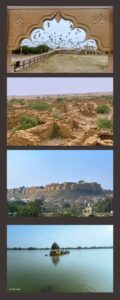
After the hilarity of my Sindhi stint and almost joining the goat squad, I shifted gears to Jaisalmer’s history. Kuldhara, a deserted village with an ancient curse, located about 17 kms of Jaisalmer was the first stop. The legend? An evil eye dimmed its glory, prompting a hasty exit of its residents the Palliwal Brahmins, leaving behind ruins and ghost stories. Who knew birding could come with a side of spooks?
From the “unliving” to the living monument, next on the tour was the iconic Jaisalmer Fort. Made of local yellow stones, it’s not just an architectural marvel; it’s one of the very few of “living forts” in the world.
While the intricate structures offered insights into the lives of Rajasthani royalty, the bustling and crowded fort presented a sharp contrast to the serene tranquility of the Desert National Park.
Wrapping up my whirlwind trip, I made a last pit stop at Gadisar Sagar Lake, a 14th-century oasis, where the fishes were fed bread and birds left with some carb loaded crumbs.
The Golden City, true to its name, not only dazzled me with cultural and avian wonders but also threw in a side dish of unexpected hilarity. Who would’ve thought that birding could come with a slice of slapstick? Khamma Ghani Jaisalmer!


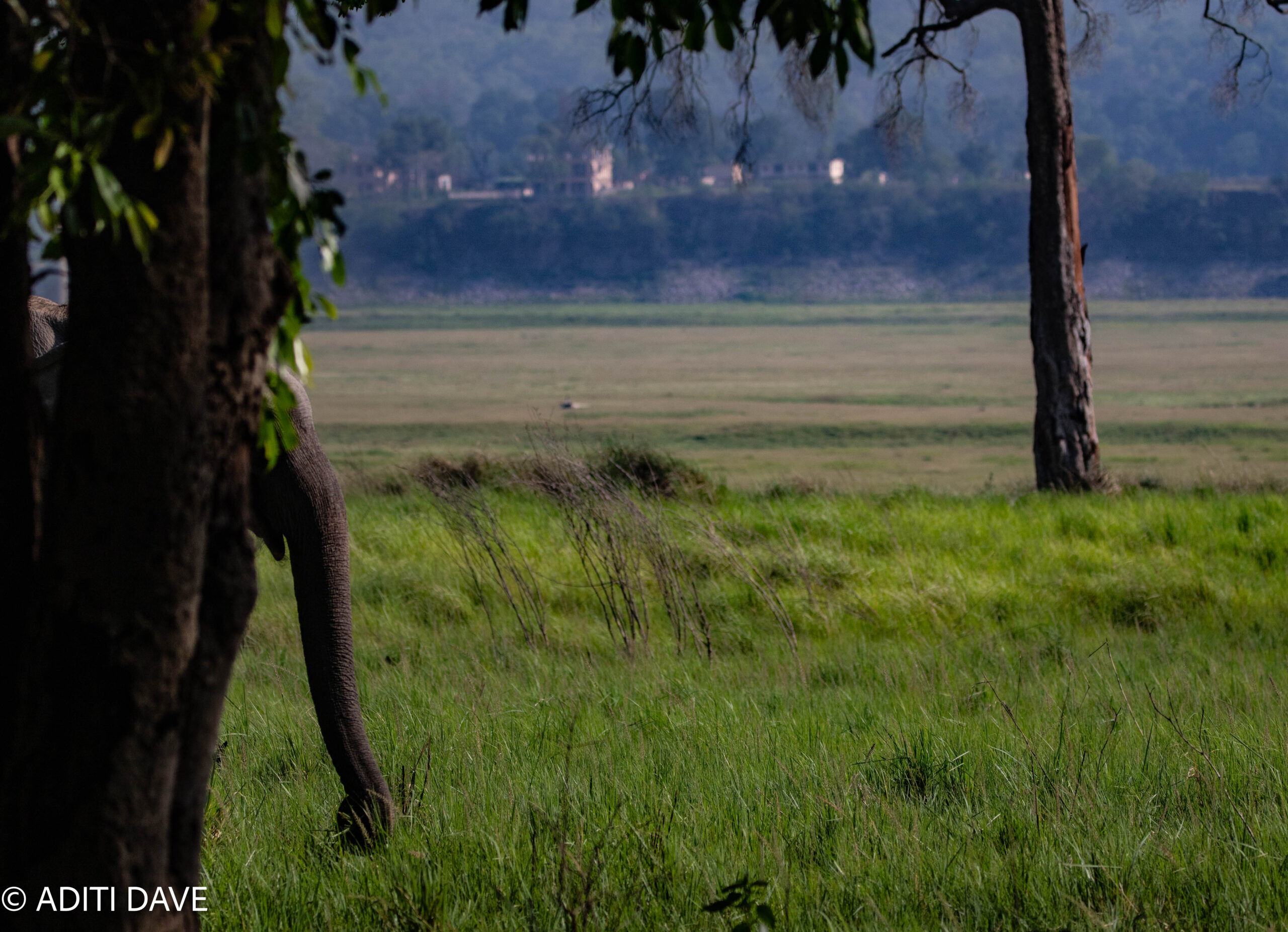
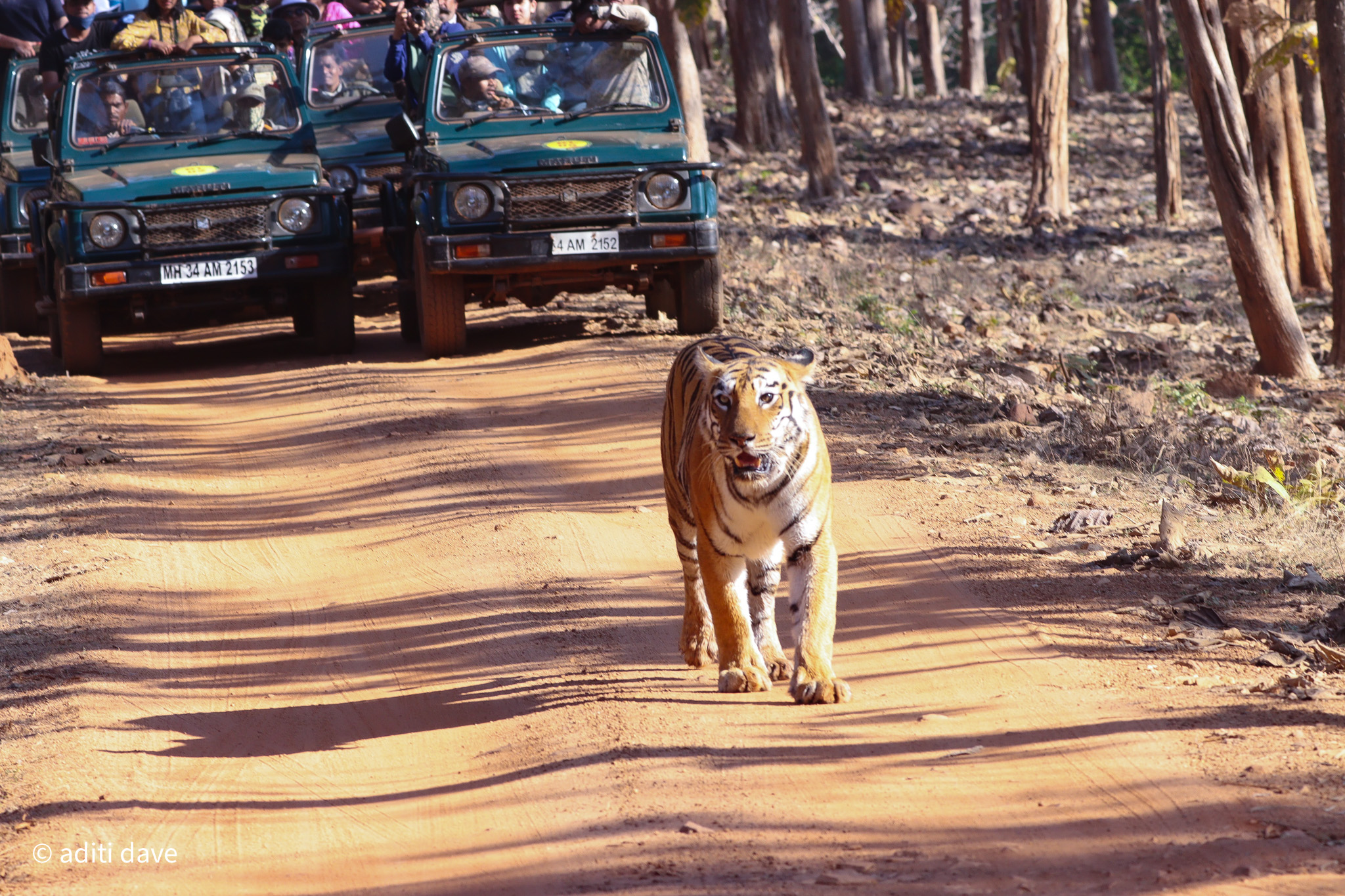
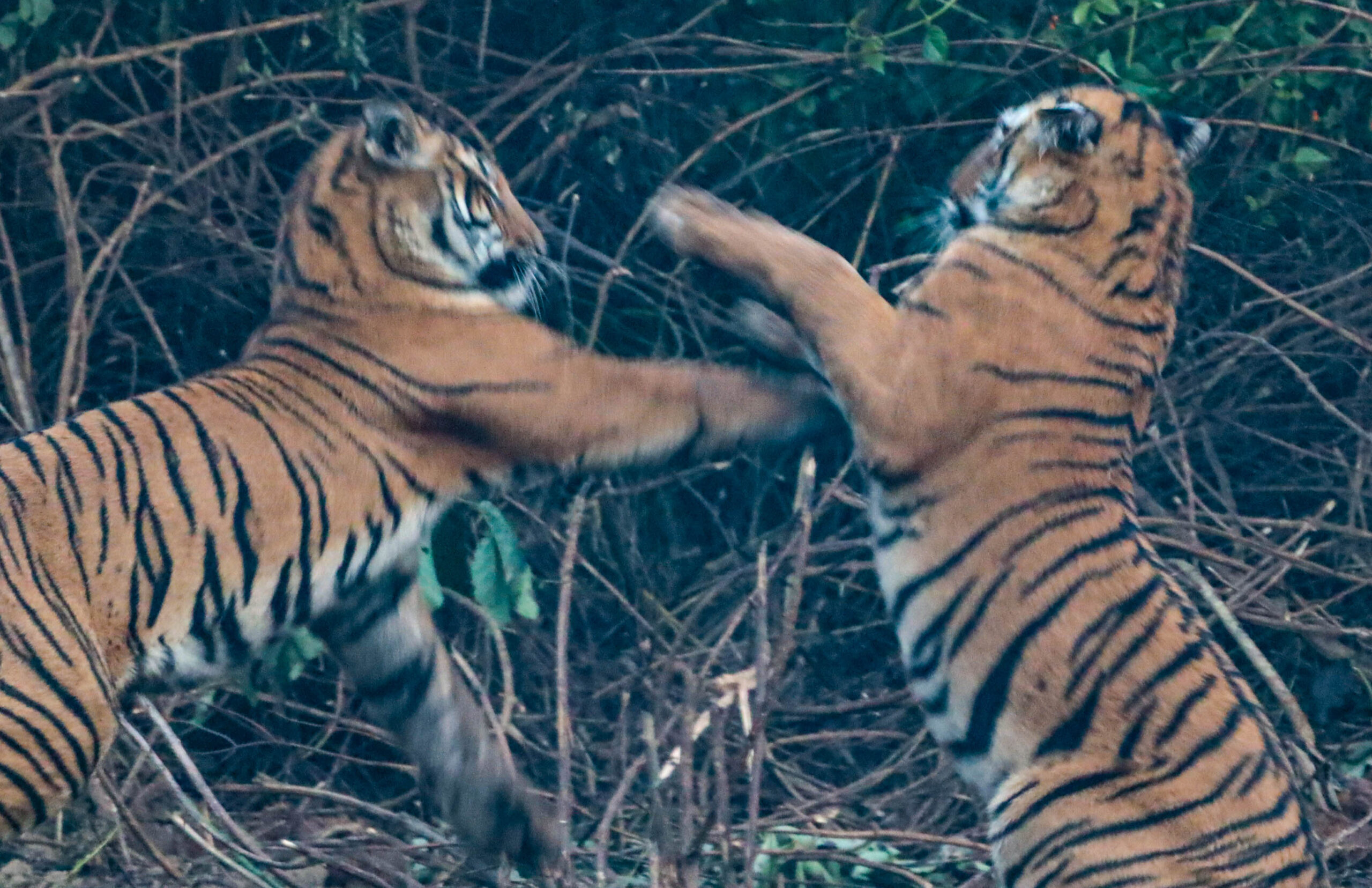
One Comment
Arunachala pandian
Very well explained